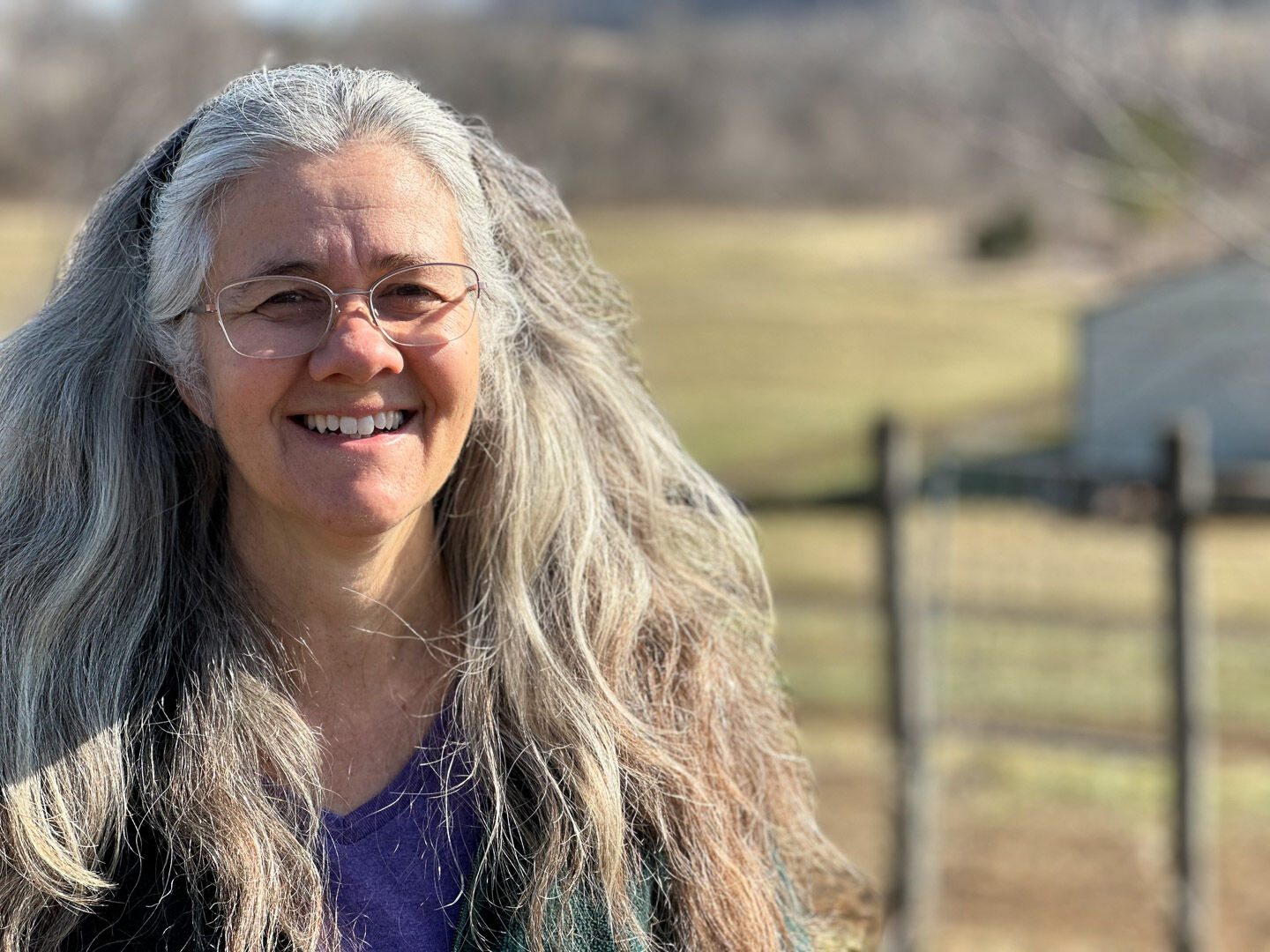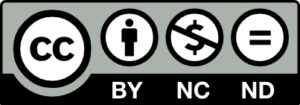A new way of using solar power with crops — the first project of its kind in Virginia — is already catching the eye of some Rappahannock farmers.
Called agrivoltaics, the innovative, renewable energy project places solar panels over crop plantings, allowing both solar energy production and farming on the same land. The $150,000 project was unveiled recently by the Piedmont Environmental Council (PEC) at its farm in Aldie, Va. Supporters say the approach could help Virginia meet its ambitious renewable energy goals while keeping farmland in use.
“I think it is a way more attractive possibility than a solar project that takes farmland out of farming,” said Rachel Bynum, who owns Waterpenny Farm in Sperryville with her husband Eric Plaksin.
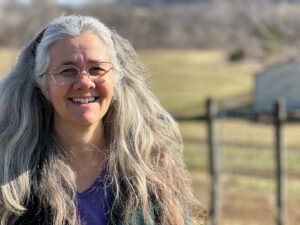
Rachel Bynum of Waterpenny Farm, Sperryville: Agrivoltaics “is a way more attractive possibility than a solar project that takes farmland out of farming.” (Photo/Bob Hurley)
“Agrivoltaics has a lot of potential, especially given the warming climate. We are seeing increases in more 100 degree heat index days and that hurts our crops. These kinds of solar projects reduce carbon emissions, can shade plantings, protect workers and help mitigate increases in air temperature,” said Bynum.
Kathryn Everett, who operates a cow and calf operation at Chancellors Rock Farm in Flint Hill, said agrivoltaics could help farmers financially.
“Combining solar with crops or grazing with small animals is a fabulous way to get a different income stream for farmers,” Everett said. “It is difficult for farms to make it given operating margins, so if you can save money by producing your own electricity or receive money from a utility, that’s a plus.”
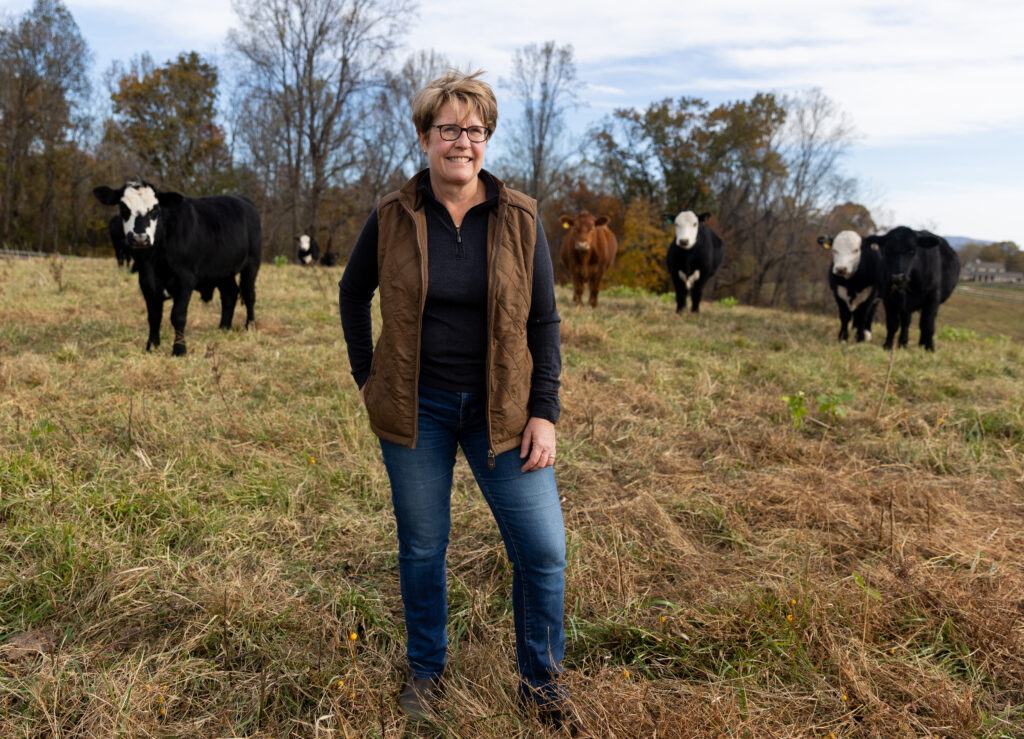
Kathryn Everett of Chancellors Rock Farm, Flint Hill: “Combining solar with crops or grazing with small animals is a fabulous way to get a different income stream for farmers.” (Photo/Ireland Hayes)
Solar meets crops
The 42 solar panels and back-up batteries at PEC’s project will generate about 17 kilowatts of electricity — enough to power its farm and send surplus energy to the grid. Panels cover about a quarter of an acre of crops, shading both in-ground and raised planting beds.
“The project is designed so it can be adapted to a wide range of crop environments,” said Teddy Pitsiokos, manager of PEC’s Community Farm at Roundabout Meadows, at the Oct.17 unveiling of the project.
“We want to show this kind of installation is workable, give farmers the confidence to build their own solar projects and bring together clean energy and agriculture as they sometimes butt heads in local planning and zoning discussions,” he said.
Rappahannock native David Massie, a conservation specialist with the Culpeper Soil and Water Conservation District, said agrivoltaics may work best for small “specialty” farms that raise food for human consumption.
“There is definitely a market there,” he said. “But I don’t think it is practical for large row crop farms planting corn or soybeans. The way those crops are planted and the height and spacing of the panels would make cultivation difficult. Cattle operations also pose challenges because larger animals can damage the arrays.”
Solar for sheep grazing
Sheep, however, are not disruptive to the solar installations and a small number of Virginia farms are grazing sheep under solar panels, reducing the need for mowing and herbicides.
Over the last two years, the state’s largest utility, Dominion Energy, has combined solar with sheep grazing and pollinators at several sites in Virginia, including Fauquier County, that all together produce enough electricity to power about 75,000 homes at peak output, according to the company’s spokesman, Tim Eberly.
“We are very interested in agrivoltaics but haven’t yet gone down the road of pairing solar with fruits or vegetables,” said Eberly. “There is interest in that, but our discussions are still in the internal dialogue phase,” he said.
Mike Sands, who raises sheep at his Bean Hollow Grassfed farm in Flint Hill, said he thinks Dominion is involved in sheep grazing for two reasons.
“First it helps with the public relations process when it comes to permitting, and second it reduces or eliminates the cost of herbicides and mowing around the panels because the sheep do the work. It is a good business strategy for them,” he said.
Sands powers about 85% of his farm and home with panels on his barn.
“If I expanded, I’d consider a small array — less than an acre — over a grazing field,” he said, “But costs and aesthetics would play a big part.”

Mike Sands of Bean Hollow Grassfed farm in Flint Hill says costs and aesthetics would weigh in his consideration of grazing his sheep under solar panels. (photo/Bob Hurley)
Zoning approval
Small farm solar systems can be approved “by right” so long as they primarily supply electricity to the farm and send any excess power back to the grid through a “net metering” connection, according to Michelle Somers, the Rappahannock’s zoning administrator.
“All they need is a zoning permit and building permit,” said Somers. “It’s a straightforward process just like if you were to put a shed out back or a new deck on your house.”
What drives agrivoltaics
A key driver behind the growing interest in agrivoltaics is Virginia’s Clean Economy Act (VCEA) which requires Dominion to source 100% of its electricity from renewable sources by 2045.
“With rapidly escalating electricity demands from data centers and growing utility bills, small scale solar projects can help reduce energy costs for ratepayers while supplying renewable energy to the grid,” said Ashish Kapoor, PEC’s senior energy and climate advisor. “Agrivoltaics can help achieve the state’s clean energy goals while keeping farmland productive.”
Kapoor noted that Virginia has about 40,000 farms. If each installed enough panels to generate one megawatt — roughly five or six acres of panels — that would produce 40 gigawatts of power, nearly double Dominion’s current generation capacity. “Even a fraction of that output from farmers would make a difference,” he said.
Financial headwinds
Rural solar projects are facing new financial headwinds. A 30% solar residential tax credit is set to expire at the end of this year and the U.S. Department of Agriculture will no longer provide guaranteed loans for solar under its Rural Development Business and Industry Guaranteed Loan Program. Funds have also been restricted under the Rural Energy for America Program (REAP) which supports renewable energy projects on farms.
“Those policy changes are going to make an impact on both large and small scale solar projects,” said Kapoor. “But solar is still the cheapest and fastest way to connect energy to the grid. Going forward we need to look to the state government to see what type of financial and permitting incentives could be adopted to help reduce the cost of solar projects.”
Farmer Bynum said without some financial assistance solar projects may prove to be too costly for farmers.
“Profit margins on farms are thin so these kinds of projects have to be cost-effective. Nonetheless, I’m glad PEC is pioneering this project so all of us can learn what works and what doesn’t in our region,” she said.
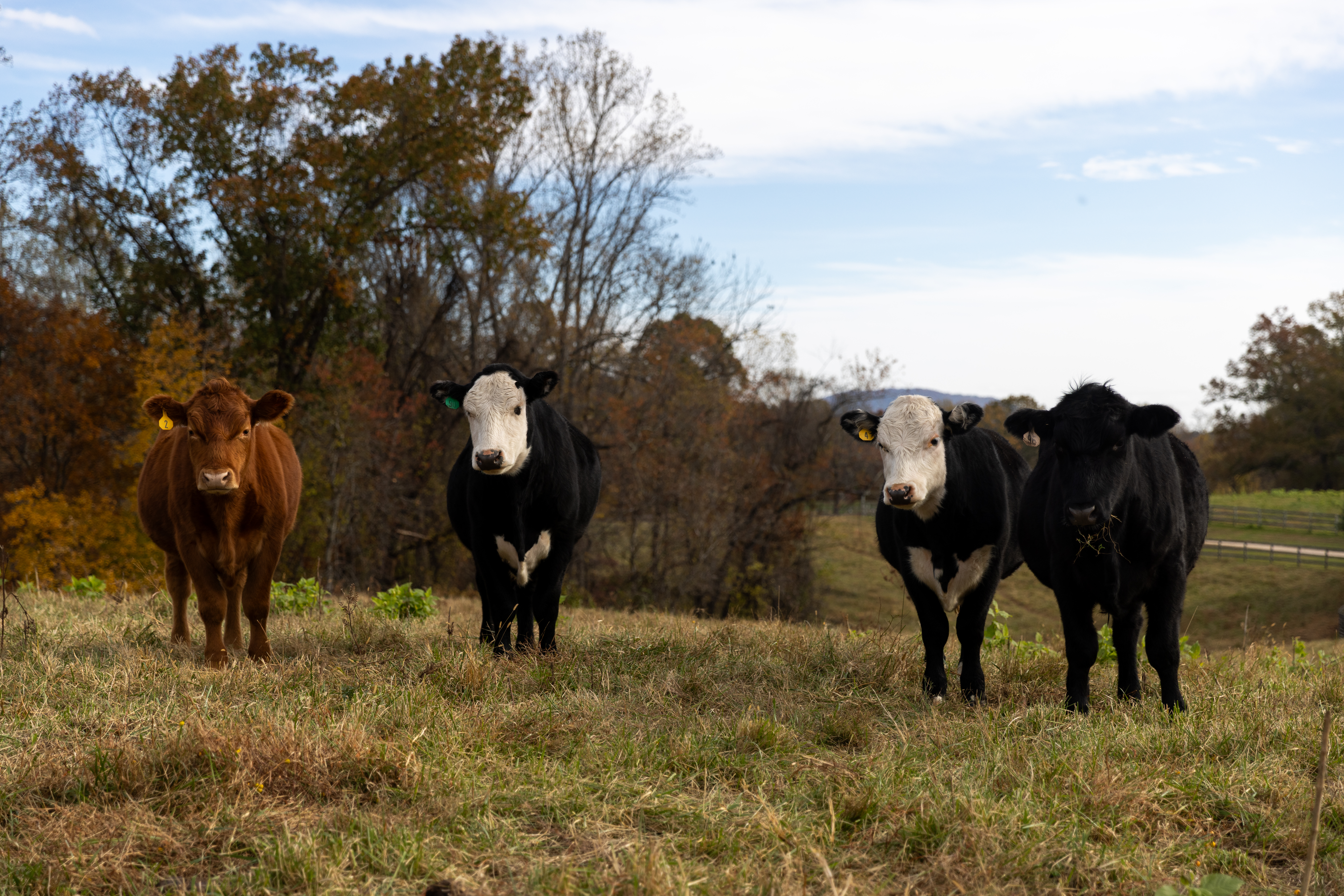
Cattle at Chancellors Rock Farm in Flint Hill. (Photo/Ireland Hayes)




